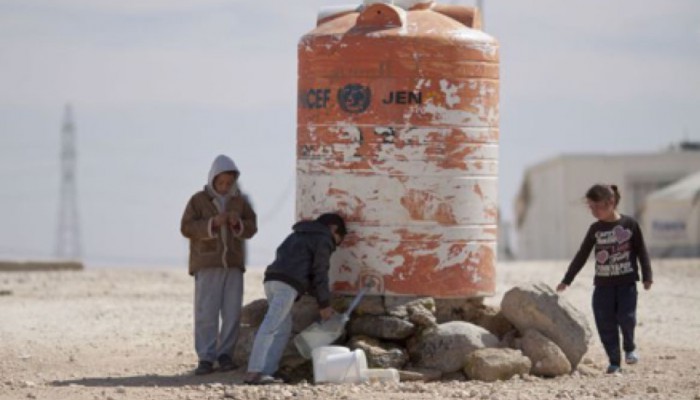What is a refugee camp like?
What is a refugee camp like?
What is a refugee camp like? How are children living and learning there? And how can we support them in coping with their war experiences? These questions led me to visiting Zaatari and Azraq, two camps for Syrian people in Jordan.

Picture by Mustafa Bader
Small cities
Both camps are substantial in size and located in the Jordanian desert. Zaatari has 79,000 inhabitants, while Azraq is smaller, with 54,000 ‘persons of concern’ (and 36,000 said to actually live in the camp). Life in Azraq appears tougher, with fewer facilities. For example, families don’t have electricity in their cabins. Zaatari has 2,500 refugee-operated shops and businesses, compared to only 100 refugee-operated shops in Azraq. Also, the people in Azraq are thought to have experienced more of the war, since the camp was established 2 years later than Zaatari. There are positive developments at Azraq as well though; to start with, they are building a large solar panel field to provide families with electricity.
Children in Zaatari
About 30,000 of Zaatari’s inhabitants are between 5 and 18 years old. In the ideal world, they would all go to school. There are 9 schools, with 21,000 school-aged children enrolled. It’s hard to assess how many children really get education on a regular basis. Does being enrolled mean going to school at least 4 days a week or just once in a while? Children are often sent to distributions of goods, or to get water for the family, instead of to school. Also for children who do go to school, with the scale I mentioned, one wonders what the classes look like and how children are able to concentrate. Especially considering their war experiences and the general disturbance of family life.
Chaos?
To get an impression of Zaatari, the film ‘Salam Neighbor’ by two young Americans is worth watching (it’s not free but you can hire it online for a small price):
I was impressed with the camps. I had expected worse, more chaos mostly. Maybe it’s similar to when you see hospital Emergency Departments in the media and then visit the Royal Children’s in Melbourne. You find out how calm that environment actually is. Not that it’s empty – the ED staff see about 11,000 children per year – but it’s well organised and most of the time, the atmosphere is quiet. The Royal Children’s in Melbourne is different from an adult trauma centre in Chicago though, and likewise, these two camps are different from other ones. Also, it’s good to keep in mind that a) this is not how Zaatari started out; it has come a long way, and b) most refugees don’t live in official refugee camps; in Jordan, about 90% live elsewhere.
The Better Learning Program
My visit involved the learning centres of the Norwegian Refugee Council. They support children who have dropped out from the camp’s school system and help them get back on track. The program has colorful, child-friendly premises with a variation of learning materials. The rest of the camps, especially in Azraq, look quite different. It was good to see the motivation and commitment of the local Jordanian staff, the international staff, and the teachers in both places.
The teachers are Syrian refugees, inhabitants of the camps. Many of them are involved in the Better Learning Program, which aims to help children concentrate in the classroom and deal with nightmares. These teachers not only have their own war experiences to cope with, but also try to support the children. It can be confronting for them, while at the same time giving a sense of purpose.
What struck me in a negative way during my visit was the lack of outlook for the people living in Zaatari and Azraq. I knew it beforehand but it’s different to see it in reality. These people have already spent two or three years in the camp. There is no indication that they will be able to return home or move on anytime soon. In the camps they are safe, but also limited in their movement and work opportunities.
Towards a trauma-informed system?
Several conversations and also the Salam Neighbor video showed that what is evident for trauma professionals, is not necessarily for everyone else. A boy who used to love school and now can’t be talked into attending immediately makes me wonder whether something happened. Not the (lovely) guys in the video. They do find out eventually (the boy’s school at home had been bombed) and it all ‘lands on its feet’ as we say in Dutch, but the way they handle the situation shows a lack of awareness. Not only individually but also collectively.
Lack of awareness of the extent and impact of traumatic events comes with a number of risks. For example, parents may behave harshly towards children who are still bedwetting because of stressful events. Not attending school because of anxiety and flashbacks may be interpreted as naughtiness.
The teachers and staff told me that many children are troubled by nightmares about their war and flight experiences. These are not isolated cases that can be referred to a limited number of specialists. While a lot of good work is already being done, there appears to be scope to build more awareness and support within the whole refugee camp system.
This blog is an adaptation from a post on the Trauma Recovery Blog